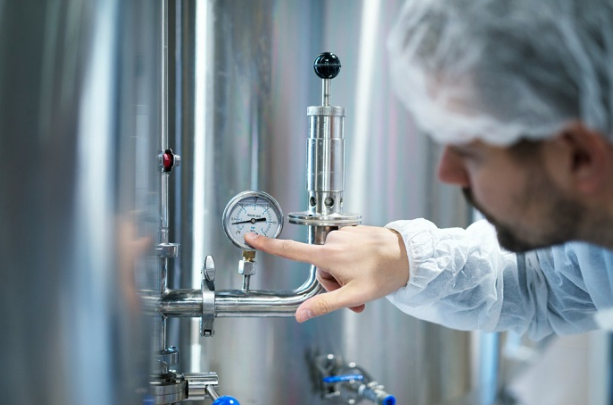Temperature is one of the most important physical measurements in our daily life. From cooking food to checking the weather and from medical thermometers to industrial machines, temperature sensors play a key role. A temperature sensor is a device that detects and measures heat and converts it into a readable value. These devices are widely used in electronics, automobiles, medical tools, and even household appliances.
In this article, we will explore what a temperature sensor is, how it works, its different types, applications, benefits, and more. By the end, you’ll have a complete understanding of temperature sensors and why they are so important in modern technology.
What is a Temperature Sensor
A temperature sensor is an electronic device that senses the temperature of an object, environment, or system and converts it into data that can be read by humans or machines. It can measure heat in terms of Celsius (°C), Fahrenheit (°F), or Kelvin (K).
Some sensors simply detect if something is hot or cold, while others provide precise digital values for use in automated systems. They are found everywhere—from air conditioners and refrigerators to vehicles and smartphones.
How Does a Temperature Sensor Work?
Temperature sensors work by monitoring the physical changes in a material when it is exposed to heat or cold. These changes can be in voltage, resistance, or current. The sensor detects the variation and translates it into a temperature reading.
For example:
- Thermocouples generate a voltage when two metals are heated.
- Thermistors change their resistance depending on temperature.
- Infrared sensors detect heat energy emitted by objects.
The working principle depends on the type of sensor, but the goal is the same: to measure temperature accurately and reliably.
Types of Temperature Sensors
There are many types of temperature sensors, each designed for specific uses. Here are the most common ones:
1. Thermocouples
- Made of two different metals joined at one end.
- Produce voltage based on heat difference.
- Used in industries like furnaces, ovens, and engines.
- Pros: Cheap, durable, wide temperature range.
- Cons: Less accurate compared to digital sensors.
2. Resistance Temperature Detectors (RTDs)
- Work on the principle that resistance of metals changes with temperature.
- Made of platinum, nickel, or copper.
- Known for high accuracy and stability.
- Common in laboratories and precise applications.
3. Thermistors
- Similar to RTDs but made from ceramic or polymer materials.
- Highly sensitive to small temperature changes.
- Commonly used in digital thermometers and household electronics.
- Pros: Affordable and sensitive.
- Cons: Limited temperature range.
4. Semiconductor-Based Sensors
- Found in microchips and circuits.
- Provide digital readings with high accuracy.
- Widely used in smartphones, computers, and electronic devices.
5. Infrared (IR) Sensors
- Detect temperature without physical contact.
- Measure heat radiation from objects.
- Common in non-contact thermometers, medical devices, and thermal cameras.
6. Bimetallic Sensors
- Made of two metals that expand at different rates.
- Simple design, often used in thermostats and mechanical switches.
Applications of Temperature Sensors
Temperature sensors are everywhere. Here are some key applications:
- Household Appliances: Refrigerators, ovens, air conditioners, and microwaves use sensors for temperature control.
- Automobiles: Measure engine coolant, exhaust, and air intake temperatures.
- Medical Devices: Digital thermometers, incubators, and hospital equipment rely on sensors.
- Industrial Use: Factories monitor machines, furnaces, and production processes.
- Electronics: Smartphones, laptops, and servers use sensors to prevent overheating.
- Weather Monitoring: Meteorological stations measure air and water temperature.
- Food Safety: Sensors monitor cooking and storage temperatures to ensure safety.
Advantages of Temperature Sensors
Using temperature sensors provides many benefits:
- Accurate measurement of heat.
- Improved safety in machines and appliances.
- Energy savings in heating and cooling systems.
- Longer lifespan of electronic devices.
- Real-time monitoring for industries.
Challenges and Limitations
While temperature sensors are highly useful, they also have some limitations:
- Some sensors are costly (like RTDs).
- Accuracy can decrease over time.
- Environmental factors (dust, humidity, vibration) may affect readings.
- Limited range in certain sensor types (like thermistors).
Importance of Temperature Sensors in Daily Life
It’s hard to imagine modern life without temperature sensors. They help in cooking food safely, keeping our homes comfortable, protecting machines from overheating, and even saving lives in medical care. Whether it’s a digital thermometer at home or advanced infrared cameras used by firefighters, these devices ensure safety, comfort, and efficiency.
Future of Temperature Sensors
With the rise of smart technology and IoT (Internet of Things), temperature sensors are becoming even more advanced. Smart homes, wearable health devices, and autonomous cars are increasingly relying on tiny, highly accurate sensors. Future sensors will likely be:
- More compact.
- More energy efficient.
- Capable of wireless communication.
- Integrated with AI for predictive monitoring.
Conclusion
A temperature sensor is more than just a small device—it’s a vital tool that supports modern life. From keeping our food safe to protecting complex machines, these sensors are everywhere. They come in different types, each with unique uses, strengths, and limitations.
As technology grows, sensors will become smarter and more accurate, playing an even bigger role in our homes, industries, and healthcare. Understanding how they work helps us appreciate the technology we use every day.
FAQs
Q1. What is the most common type of temperature sensor?
The thermocouple is the most widely used because it’s affordable, durable, and suitable for a wide temperature range.
Q2. Which sensor is best for high accuracy?
Resistance Temperature Detectors (RTDs) are the most accurate but also more expensive.
Q3. Can temperature sensors measure without touching the object?
Yes, infrared temperature sensors can measure heat radiation without direct contact.

